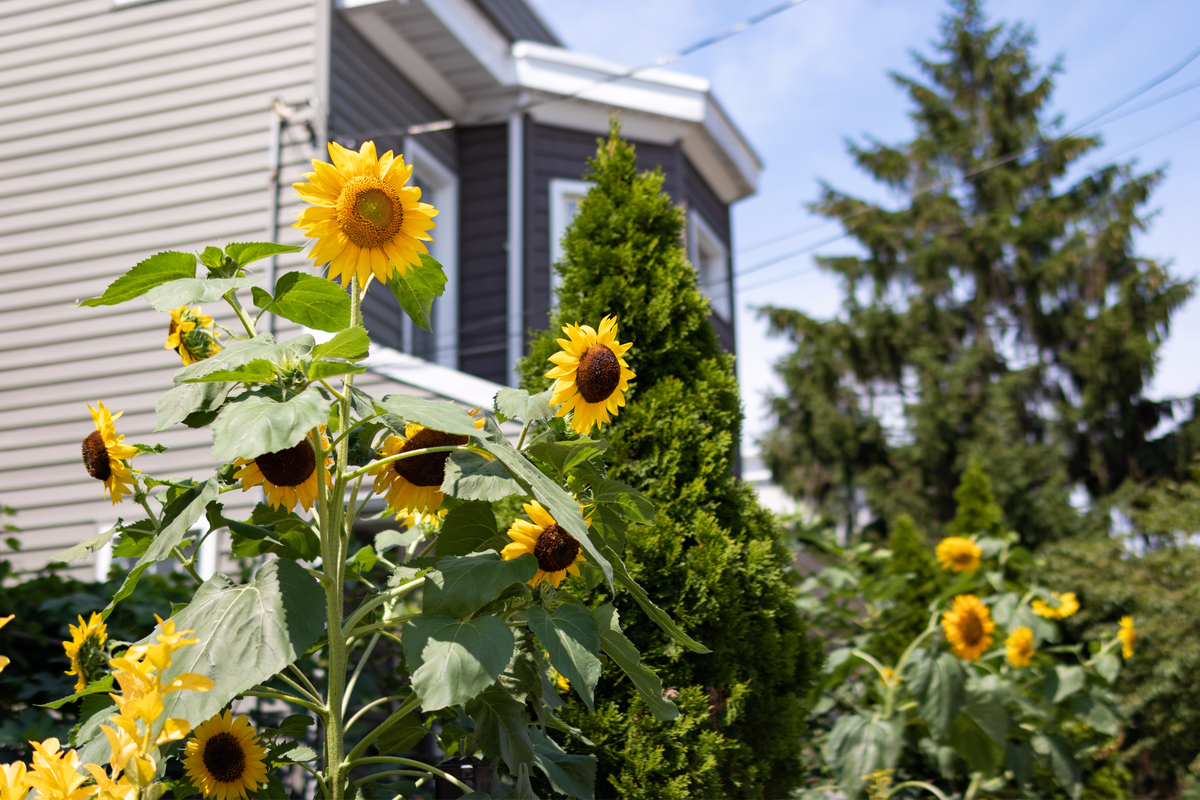
I’m not in the habit of checking the Guinness World Records website before I write a gardening article, but when my research uncovered that the world of competitive gardening is filled with competitions to crown the next “tallest and largest sunflower”, my curiosity got the better of me.
If you’re curious about it too, just know that the record for the tallest sunflower (measuring 30 feet and 1 inch, which translates to 9.17 meters) is held by German gardener Hans-Peter Schiffer.
It took the presence of the local fire brigade and setting up a multi-level scaffolding platform to measure the height of this sunflower. Hans-Peter had already broken the record three times prior to his latest one, and every single year he managed to grow an even taller sunflower. Obviously, as a competitive gardener, he doesn’t share his secrets, so we can only assume that part of his success is due to meticulous seed saving.
If you too want to grow giant sunflowers (although I can’t guarantee any record breaking), here are some tips that improve your chances of getting the biggest and tallest sunflowers that will leave your neighbors green with envy.
1. Choose sunflower varieties bred for height.
The main secret to growing giant sunflowers is … choosing giant varieties. Not a head-scratcher, I know. But it’s really important to mention, especially for the benefit of new gardeners, that not all sunflowers are created equal.
You may have seen giant sunflowers growing in one of your neighbor’s backyards or allotment plots, so you go ahead and get some sunflower seeds yourself. Or more likely, you go out and buy sunflower starters from your local plant nursery. But surprise, surprise, your sunflower fails to ever reach a considerable height.
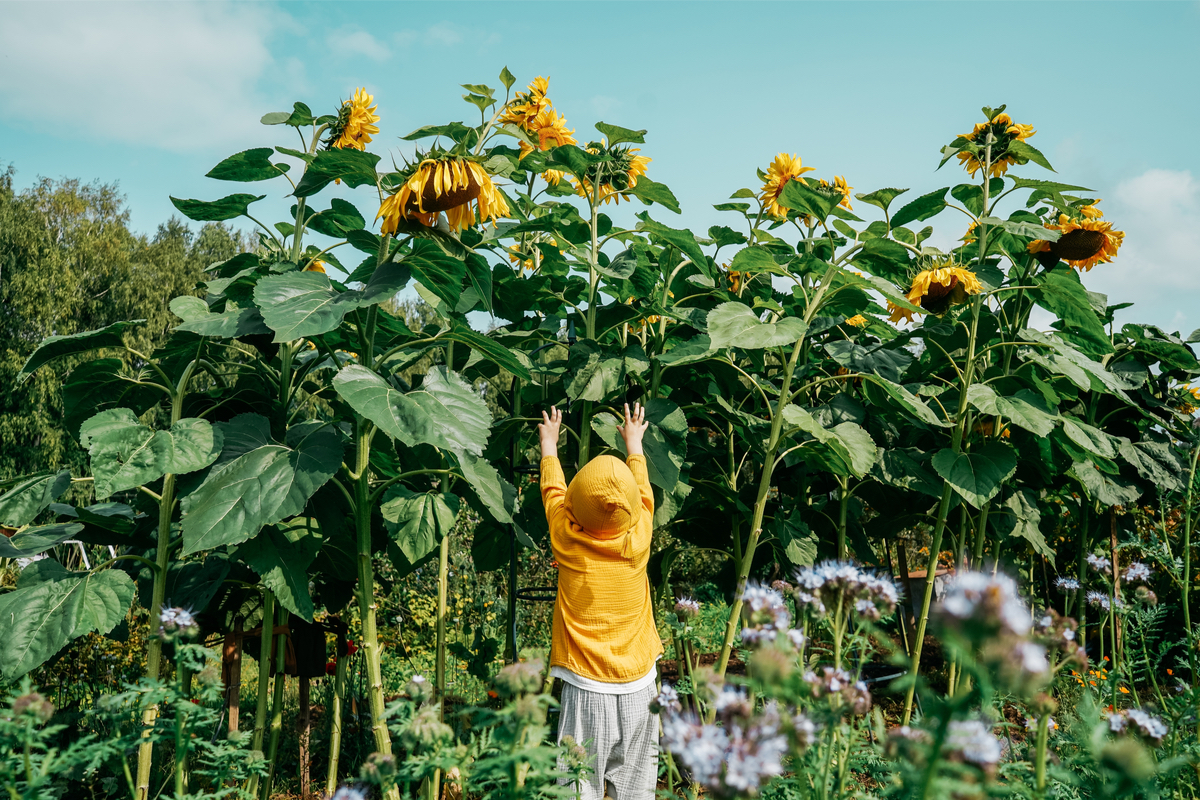
Chances are, what your neighbor is growing is a large sunflower cultivar. And chances are, the sunflower starter that you bought from the nursery is a compact ornamental variety that’s meant to grow in pots.
Here are the most common large cultivars to look for if you want to get tall sunflowers topped up with large blooms:
‘Mammoth’ sunflower is a towering heirloom variety that can grow up to 12 feet in height. It has a sturdy trunk and produces edible seeds. This variety is also very appetizing to bees and other pollinators.
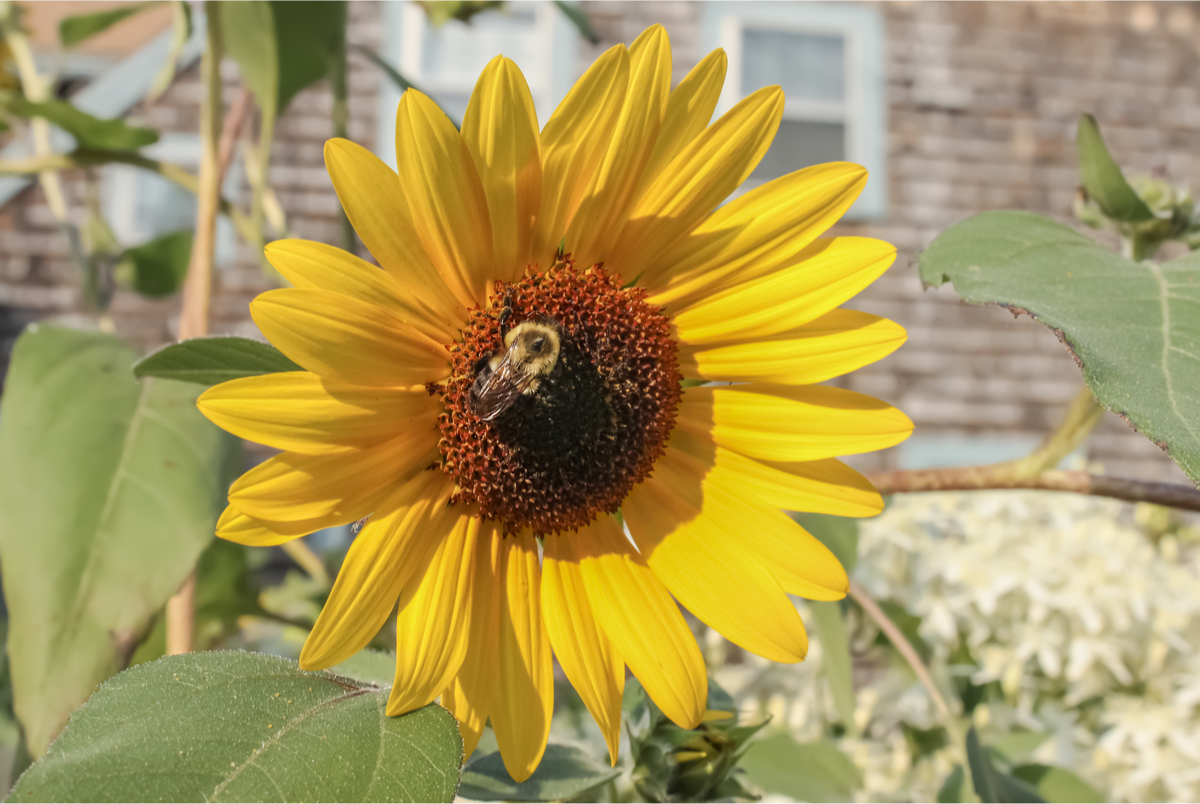
‘Giant Primrose’ sunflower is a side-branching variety, so it makes a great plant if you’re growing a cut-flower garden. You can just pick the lower blooms as they come out (and even before they open) and allow the main stalk to keep reaching high. The ‘Giant Primrose’ sunflower can grow up to 12 feet tall and produces multiple blooms that are a lighter shade of yellow than the Mammoth variety.
‘Titan’ sunflower is one of the largest varieties on the market. Even though it takes up to 110 days to mature in full sun, it grows to a stunning 12 to 14 feet tall with blooms that can reach 25 to 30 inches across. This sunflower variety forms a very thick trunk and an extended root system.
‘Mongolian Giant’ sunflower can reach up to 14 feet tall with flowers that can get to about 18 inches across. If you decide this is the cultivar for you, definitely plant it in a location that stays sheltered from wind and storms.
‘Giganteus’ sunflower stands true to its name – at 12 feet tall with blooms that reach 18 inches across. The stem of this sunflower variety also grows very thick and sturdy, which makes it a perfect support for other trailing plants that can grow in its shade. This variety also needs anchoring and support on exposed sites.
‘Skyscraper’ sunflower is another towering giant that can grow up to 12 feet high. It produces blooms that reach 14 inches across. It takes around 75 days for this type of sunflower to reach maturity.
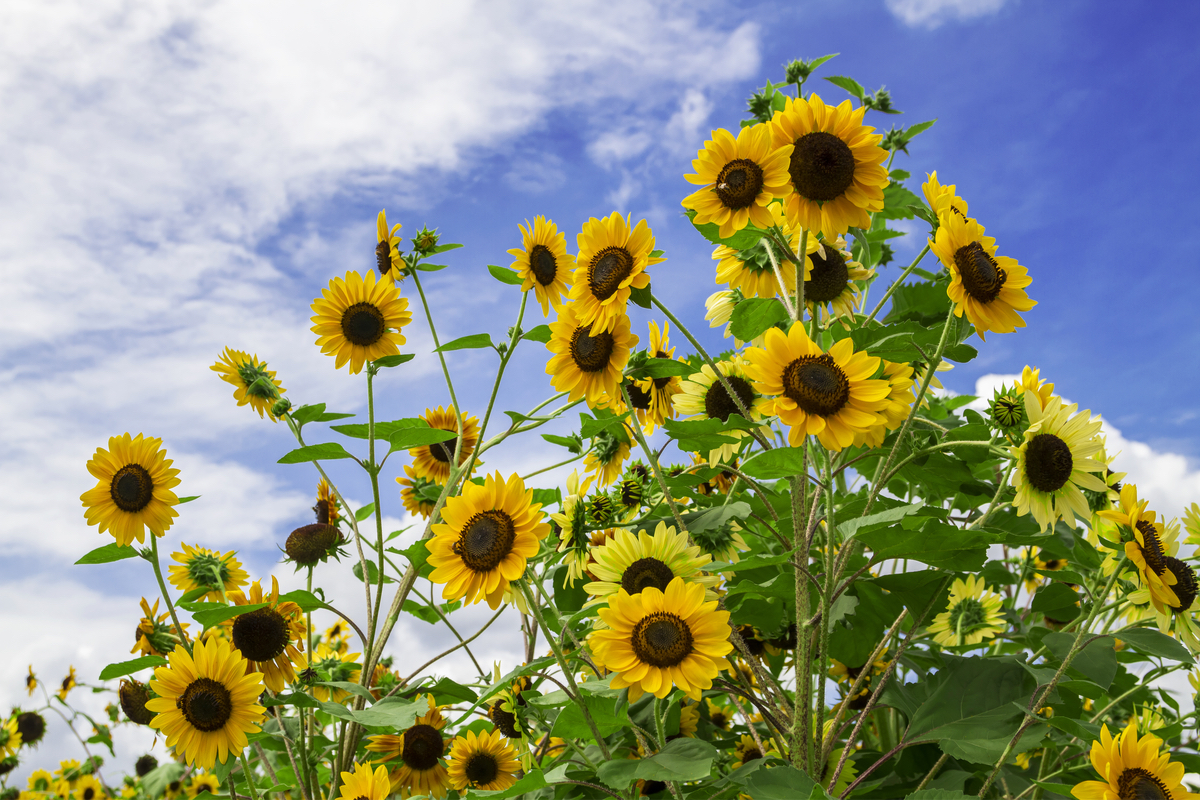
‘Paul Bunyan’ sunflower – much like its folk hero namesake, this sunflower will grow into a giant, towering at 16 to 18 feet tall. The deep yellow flowers can reach up to 23 inches across.
‘American Giant’ sunflower is a fast-grower that takes between 70 and 80 days to reach maturity. At its tallest, it can get to 16 feet, but the blooms stay relatively smaller compared to other large sunflower varieties (around 10 inches across)
‘Sunzilla’ sunflower is another cultivar that has been selected for its height (16 feet or taller) and its giant blooms. This type of sunflower grows a thick and sturdy stalk that can hold the weight of the mature seed head.
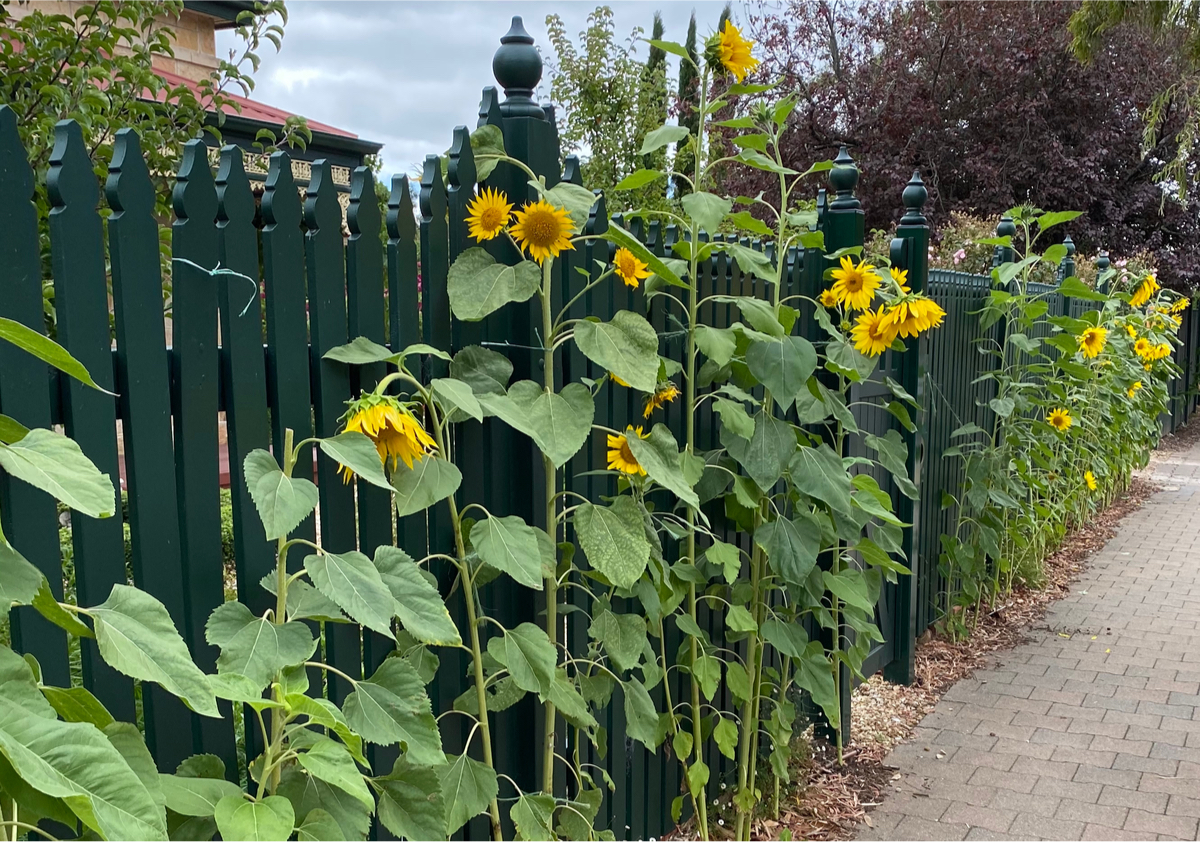
‘California Greystripe’ sunflower is a hardy variety that produces a high-yield of striped seeds much beloved by birds and delicious as snacks for the gardeners. The stalk can reach 10-12 feet in height and even taller in climates with long, hot summers.
‘Autumn Beauty’ sunflower grows to about seven feet tall. The blooms are slightly smaller (about six inches across), but the beautiful rusty hues make them the perfect plant for a fall garden. Even though it stays shorter than the rest of the varieties I mentioned above, I thought I’d add it to the list just in case you’re looking for a tall sunflower in a color other than yellow.
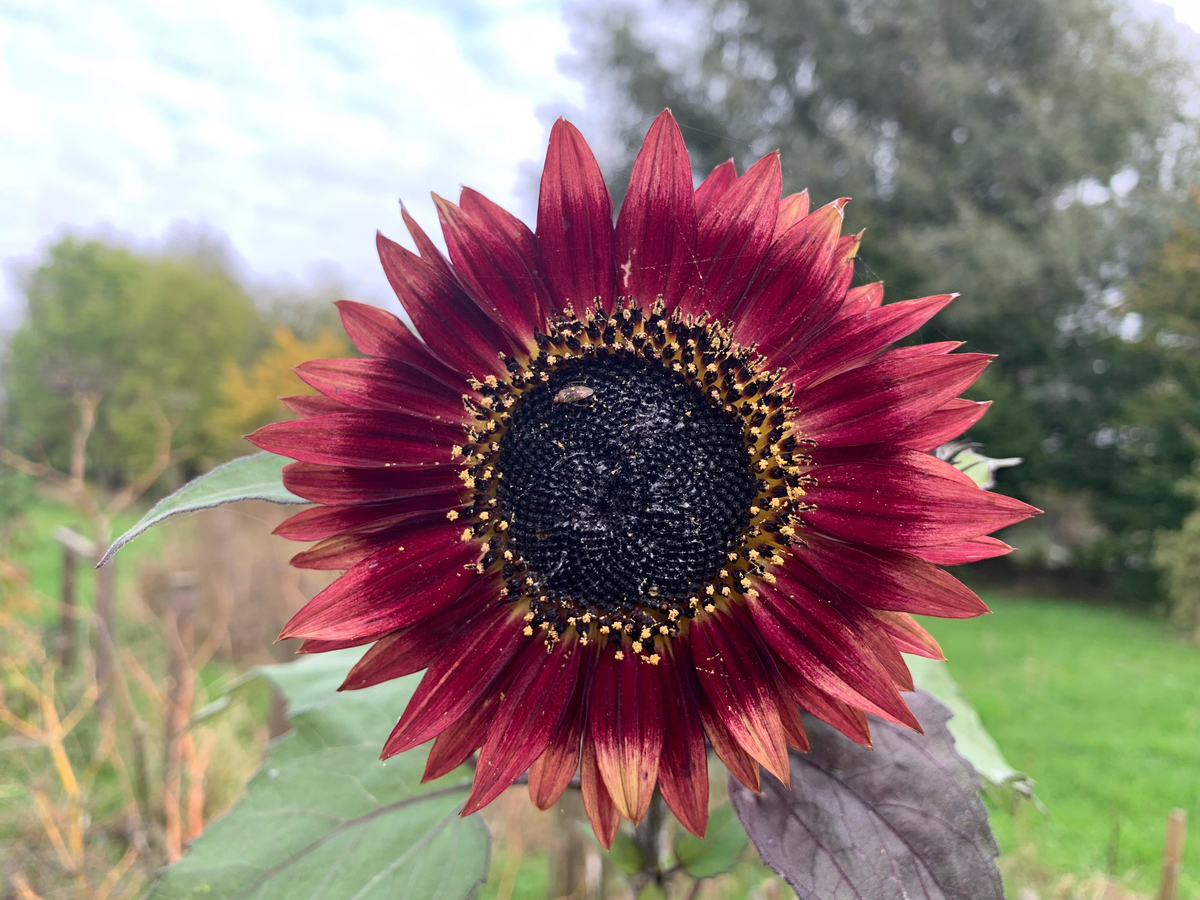
Bonus tip: Know your dwarf varieties
Just as important as knowing which sunflower varieties to choose is knowing which ones to avoid if you’re aiming for competition-level height. The following popular varieties will stay on the small side, so it’s best to avoid them if you’re looking to grow giant sunflowers:
‘Sunrich Gold’ – 5 feet tall
‘Lemon Queen’ – 5 feet tall
‘Gummy Bear’ – 3 to 4 feet tall
‘Teddy Bear’ – 2 to 3 feet tall
‘Firecracker’ – 2 to 3 feet tall
‘Sunny Smile’ – 2 to 3 feet tall
‘Topolino’ – 2 feet tall
‘Sundance Kid’ – 2 feet tall
‘Little Becka’ – 1 to 2 feet tall
‘Elf’ – 16 inches tall
‘Pacino’ – 12 to 16 inches tall
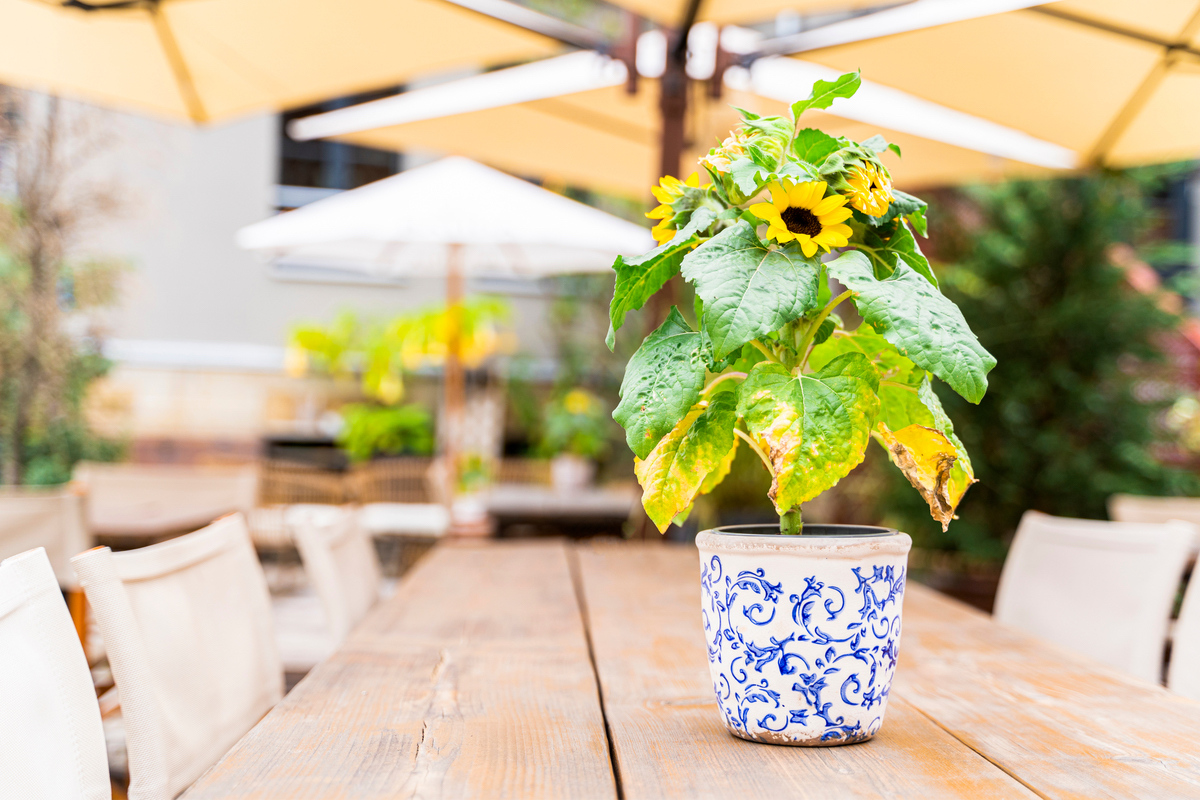
2. Enrich the soil before planting and keep it well-fed.
Sunflowers are hungry plants, and the giant hybrids will take even more nutrients out of the ground.
First, make sure that your soil isn’t compacted. In order to sustain fast, consistent growth, sunflowers send out a tap root and a strong root system. Heavy compaction in the soil will not stop this process, but it will slow it down significantly and stunt your plant’s initial growth spurt.
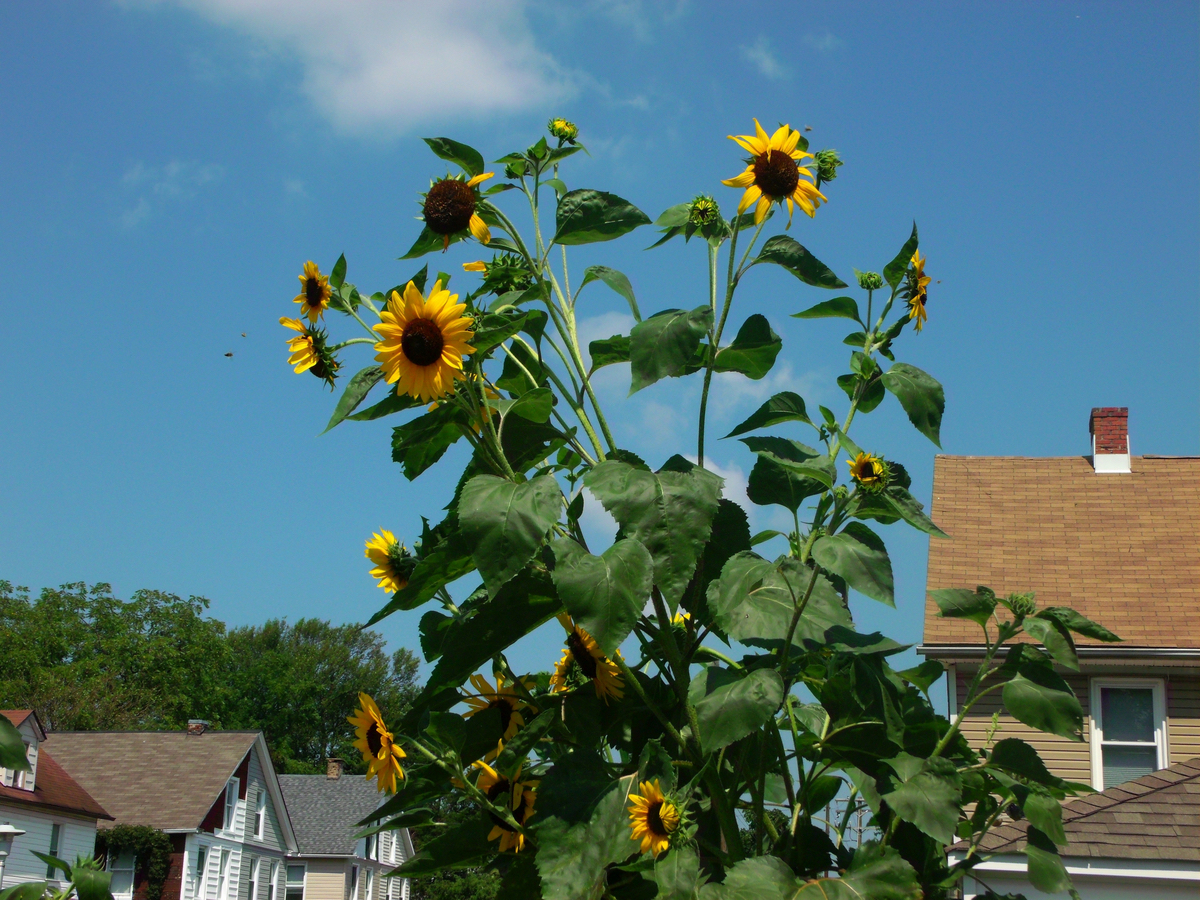
With sunflowers, the bigger they grow, the stronger and more vigorous they get, so once they get past the initial stage, they’ll be able to grow just fine. It’s the initial stage that they need the most help with (like any plant, of course). So make sure that you don’t plant it in a location with thick underground tree roots or heavy clay.
Before you plant your seeds, you should enrich the soil. You can work fresh compost, well-rotted manure or chicken pellets into the soil, about 8 to 10 inches deep.
To maintain the soil properly fed throughout the growing season, you can fertilize with fish emulsion, seaweed emulsion or compost tea, all properly diluted according to the instructions on the packaging. Unless you’re planning on entering a “tallest sunflower competition,” you can get away with only feeding the plants once a month.
Keep in mind that when you fertilize your sunflower, you shouldn’t pour the liquid (not even the organic one) directly on the stem or right above the root of the plant. You should apply the diluted feed about eight inches around the area where the stem pokes out of the ground.
3. A full sun location for your sunflowers is non-negotiable.
If your goal is to grow giant sunflowers with equally giant blooms, you must choose a location that gets full sun. This means at least six to eight hours of direct sunlight a day. More is better, but it may not be achievable for gardeners in northern climates.
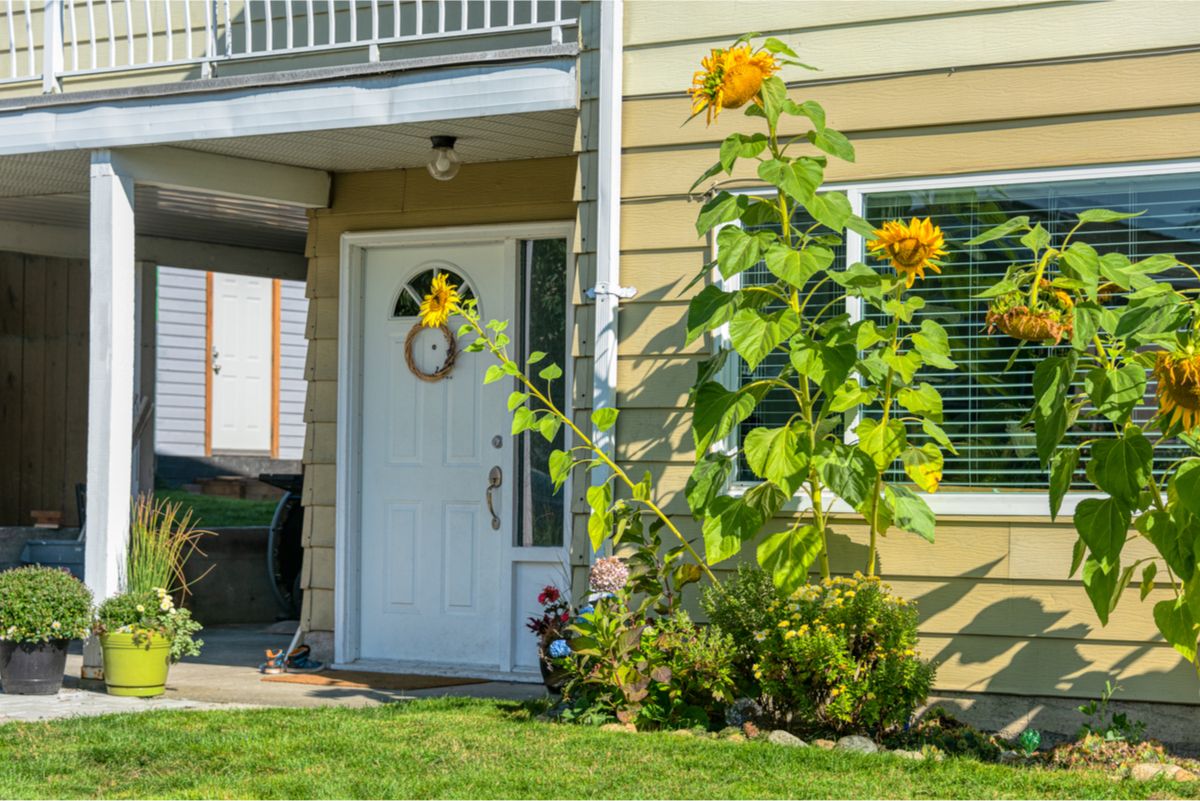
If you are gardening in a zone with shorter, wetter summers, even the varieties that we mentioned above may not reach their full height. Don’t be discouraged though! This doesn’t mean that you won’t be able to grow sunflowers at all, it just means that your sunflowers won’t get as tall. The good news is that you’re still likely to get a good seed harvest from your crop.
4. If possible, sow your sunflowers directly.
Even though you may be tempted to get a head start on the season by starting your sunflower seeds indoors (and you can do that, about three weeks to a month before the last expected frost date in spring), the best option for growing tall sunflowers is to direct sow them straight into the spot where you plan on growing them.
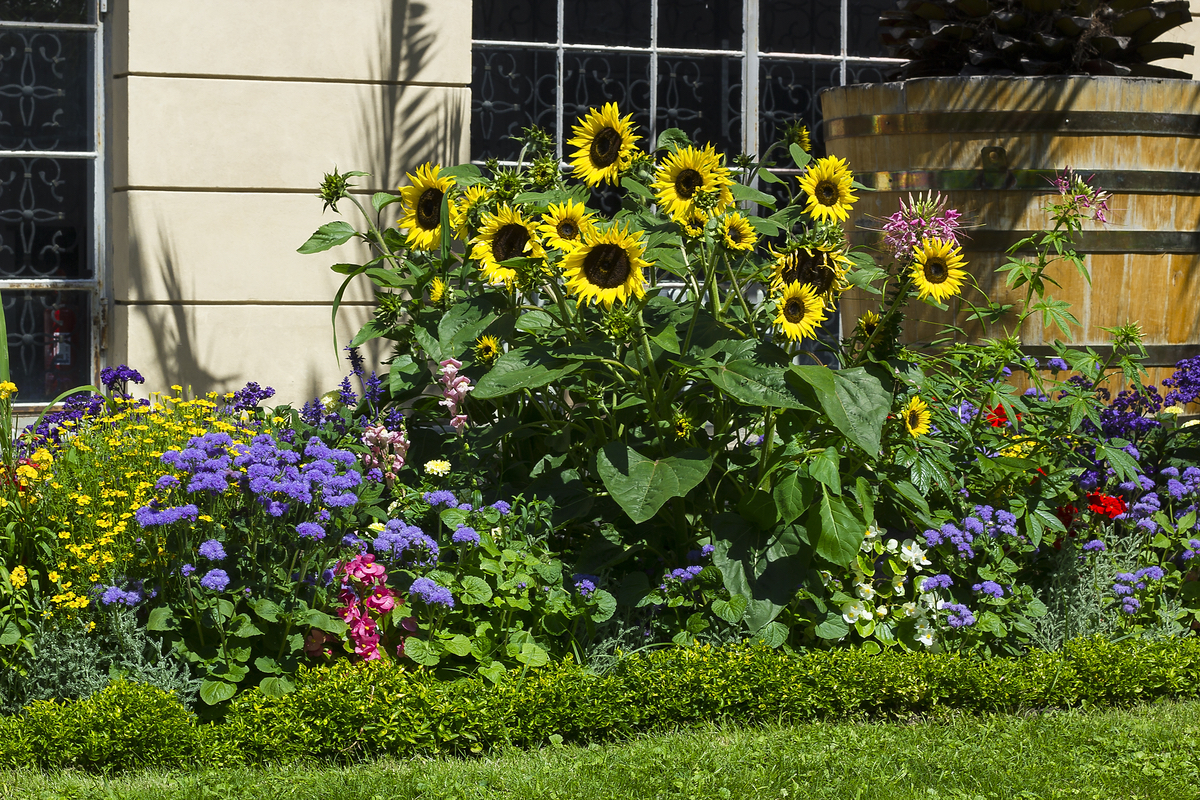
This is because sunflowers hate having their roots disturbed. And the sooner you give them the space to grow their vigorous taproots into their final location, the better the root structure will grow. Strong roots (that can even reach four feet in depth below the ground) are crucial for growing tall sunflowers. Not only do they help the plant access nutrients and water (even in a drought), but they also provide deep anchoring and support for these yellow giants.
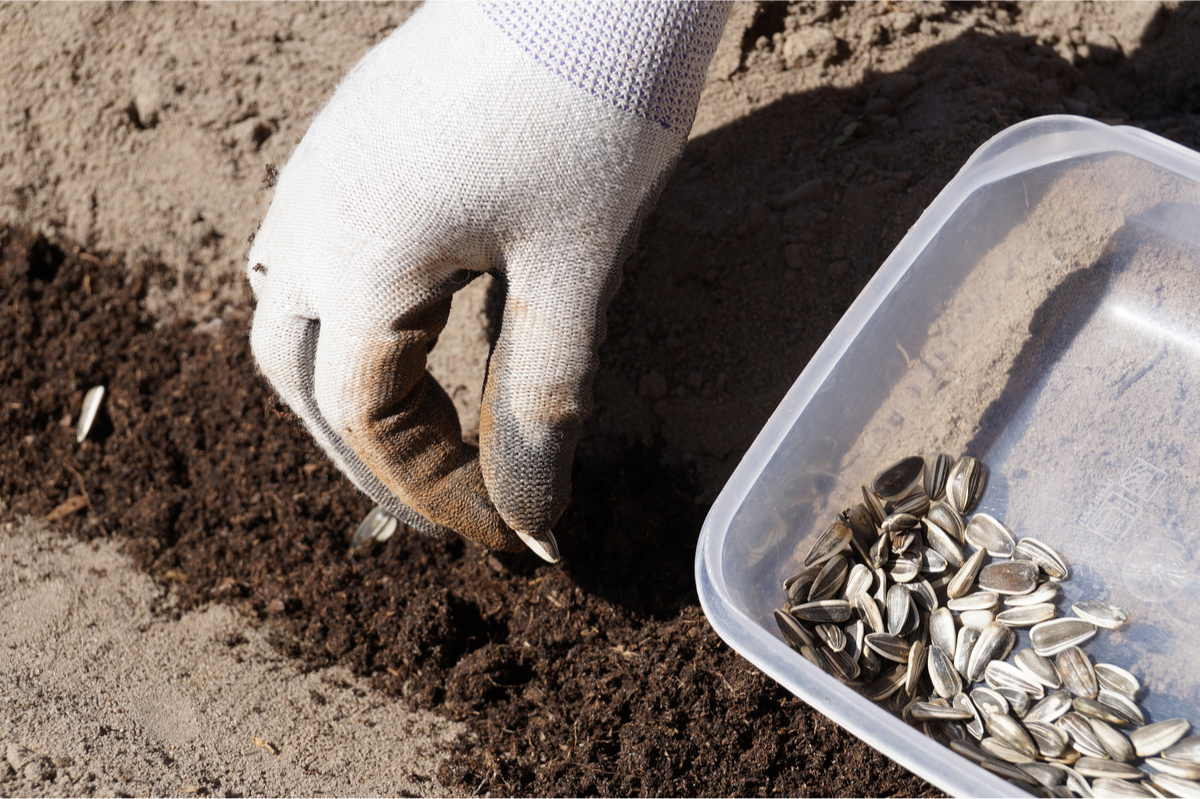
Keep in mind that you won’t be able to grow tall sunflowers with large blooms in pots. Even if you’re using deep outdoor pots or planters, you’ll still have trouble keeping the soil sufficiently fed and moist enough to result in a good tall crop. If you want to add potted sunflowers to your garden, have a look at the dwarf varieties we mentioned above. They’ll make wonderful porch plants or patio borders.
Along the same lines, if you’re gardening in raised beds, make sure that your bed is tall enough, or extends deep enough below the raised structure to allow proper root development for your sunflowers. A shallow gardening bed with no room for roots to dig into is just as bad as growing your plants in containers.
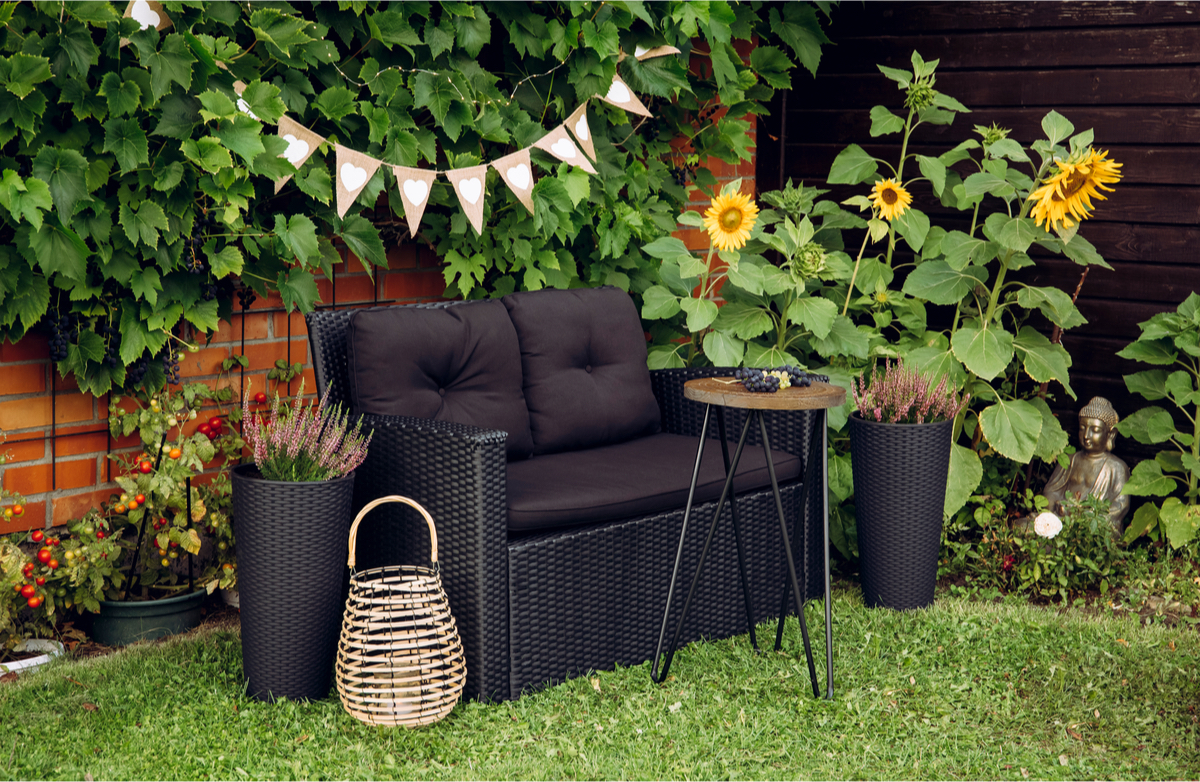
You should sow your sunflowers outdoors after your last expected frost date, as long as night temperatures aren’t forecast to fall below 50F. So depending on what USDA zone you’re gardening in, this may be anywhere from early April (if you’re in a warmer climate) to early June (if you’re gardening further north).
To sow your sunflowers, simply press your seeds about one inch into the ground and about 6 to 8 inches apart (if you’re planning on thinning them, more on this below) or about 20 inches apart if you’re not oversowing.
If you’re planting more than one row, make sure that the rows are about two feet apart and the seeds are staggered along their respective rows.
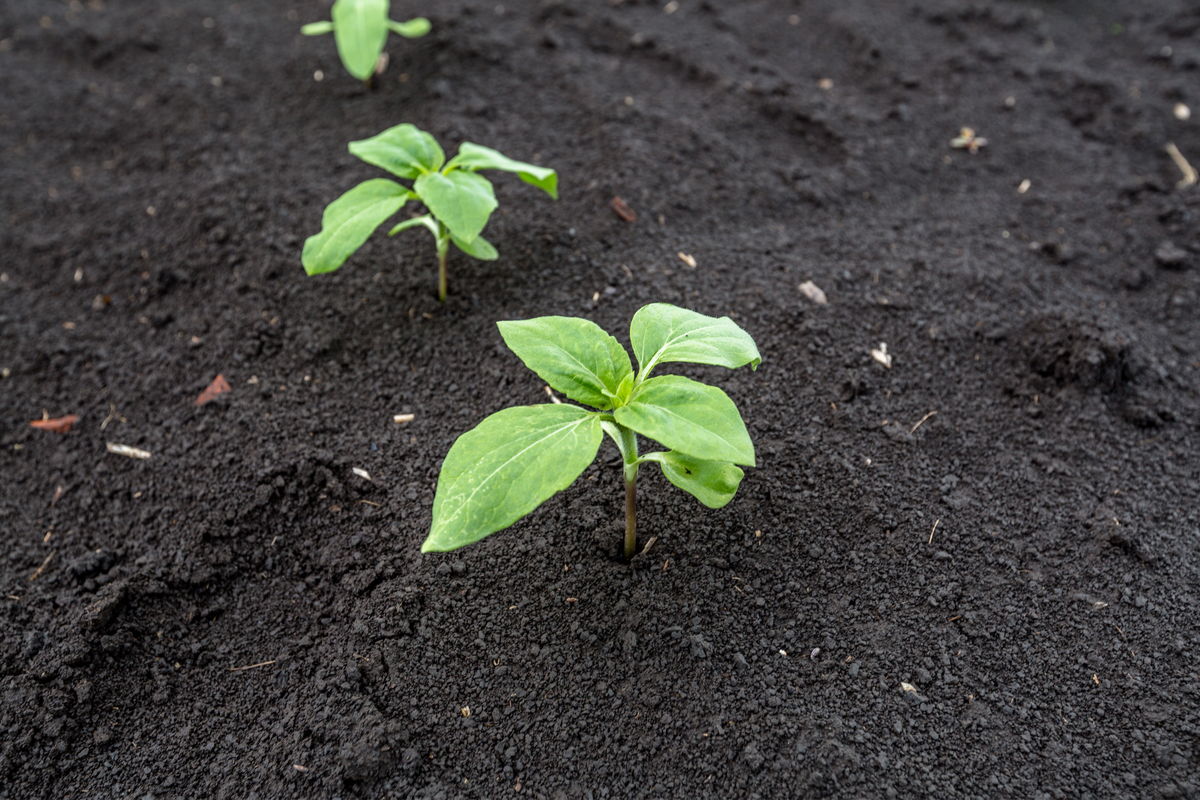
Once the seeds are in the ground, water thoroughly to get the soil settled around the seed. Keep the area moist, but not soggy. If the soil is warm enough, you’ll start seeing beautiful new seedlings in about 10 to 12 days. This is just the beginning though. It takes tall sunflowers anywhere from 70 to 120 days to reach maturity (that’s when they produce viable seeds). But I really think it’s worth it!
5. Sow extra sunflower seeds and thin them out.
I admit that I’m not a big fan of oversowing and thinning. Being a frugal gardener, especially when it comes to my seed collection, I often don’t see the point in wasting perfectly good seeds.
But even I believe that thinning is an important factor in growing tall sunflowers with large blooms. Thinning allows proper root development because it eliminates competition between plants. Because they’re very fast growers, at least compared to other plants in the garden, overcrowded sunflowers will soon be vying for light (above ground) and root space and nutrients (below ground). So rather than having a few vigorous sunflowers to fill your space, you’ll be left with a scraggly collection if you don’t thin them out.
How much you should thin them depends on a few factors, including how much sun your site gets and what variety of sunflowers you’ve planted. Always check the instructions on the seed package for more personalized advice.
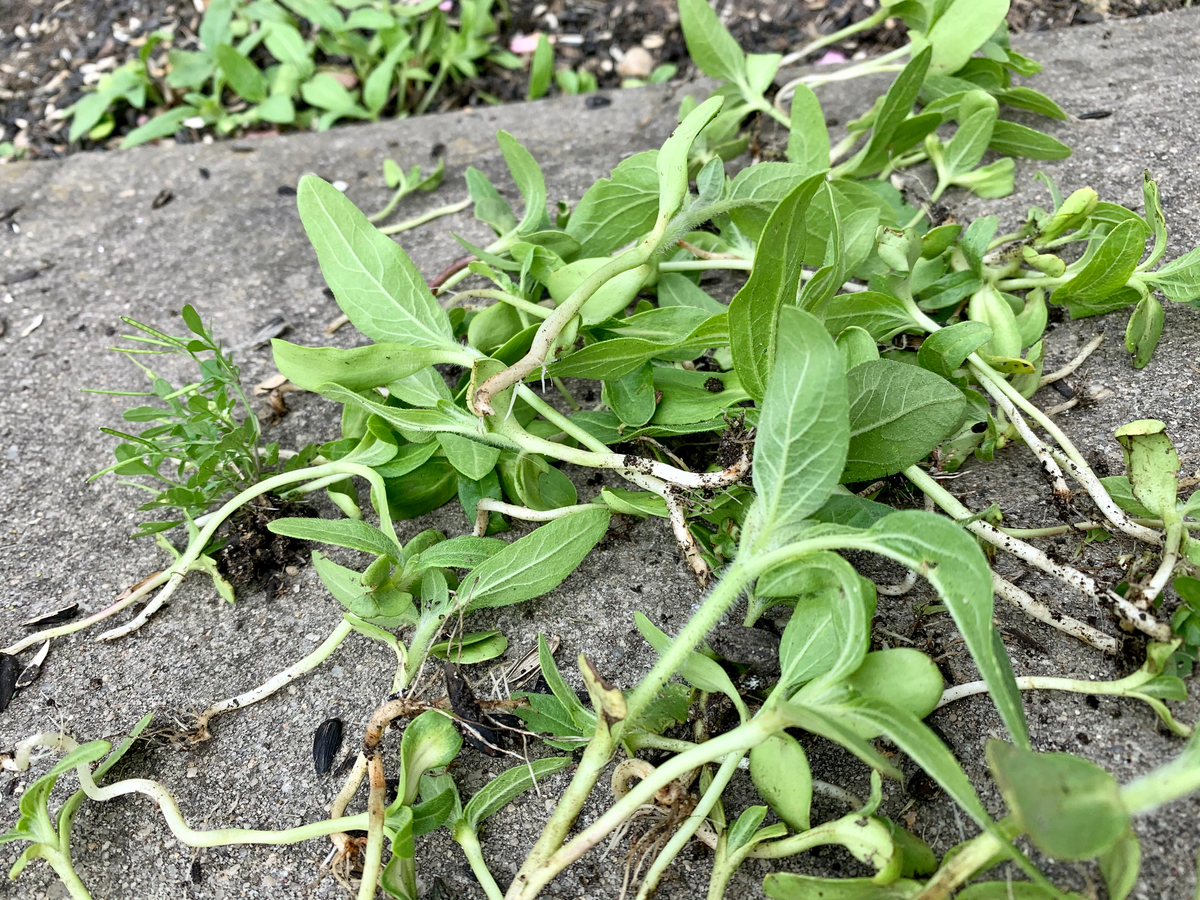
In general, you should wait until your seedlings have grown tall enough to be able to distinguish the tallest contenders. So once your seedlings have grown to about five inches tall, grab a tape measure, stretch it along the ground, and pluck the weakest-looking plant roughly every 15 to 20 inches apart. This variation in spacing depends on what variety you’re growing. For example, ‘Mammoth’, ‘American Giant’ and ‘Paul Bunyan’ sunflowers will need to be thinned further apart than their mid-sized counterparts.
At this point, you should mulch the soil around the plants to help it retain moisture and even out the temperature below ground. Make sure that the mulch doesn’t touch the stem of the sunflower.
6. Pinch the sunflower side shoots, if any.
Most of the large varieties we’ve described above are single-stock blooms. That means they will only put out one bloom head per sunflower, allowing the plant to focus its growth energy into that single seed head.
But if you’ve chosen a variety that branches sideways to put out multiple blooms around the stalk, you may not get as large a main bloom. In this case, you can pinch off the extra blooms as soon as you notice them forming (much as you would pinch the suckers off your tomato plants). Or you can wait for the blooming head to form and harvest it for a cut flower arrangement indoors.
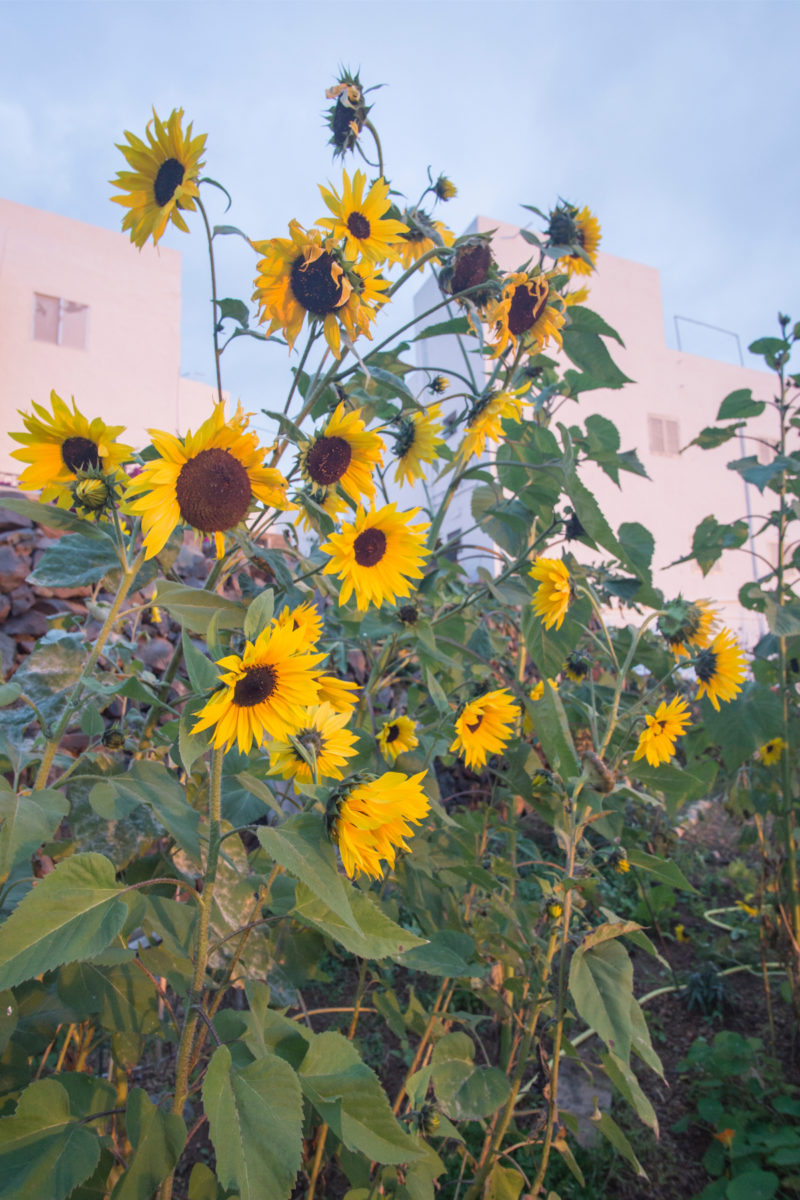
This only matters if your goal is to grow giant tall sunflower blooms, so there’s no need to pinch the suckers if you’re ok with getting smaller blooms, but more of them.
7. Protect your sunflowers at different stages of growth.
One of the reasons I love growing sunflowers is for their seed head harvest. Unfortunately, I share this preference with birds, slugs, squirrels and deer.
And while I leave a lot of other seed-producing plants in the garden to feed the local bird population, I readily admit that I’m not as generous with my sunflower seeds.
Sunflowers need protection at different stages of growth, but that’s especially true once you’ve just planted the seed. Mice, birds, slugs and other critters will be getting a delicious feast if you forget to cover your seeds, and you’ll be left wondering why none of your seeds germinated.
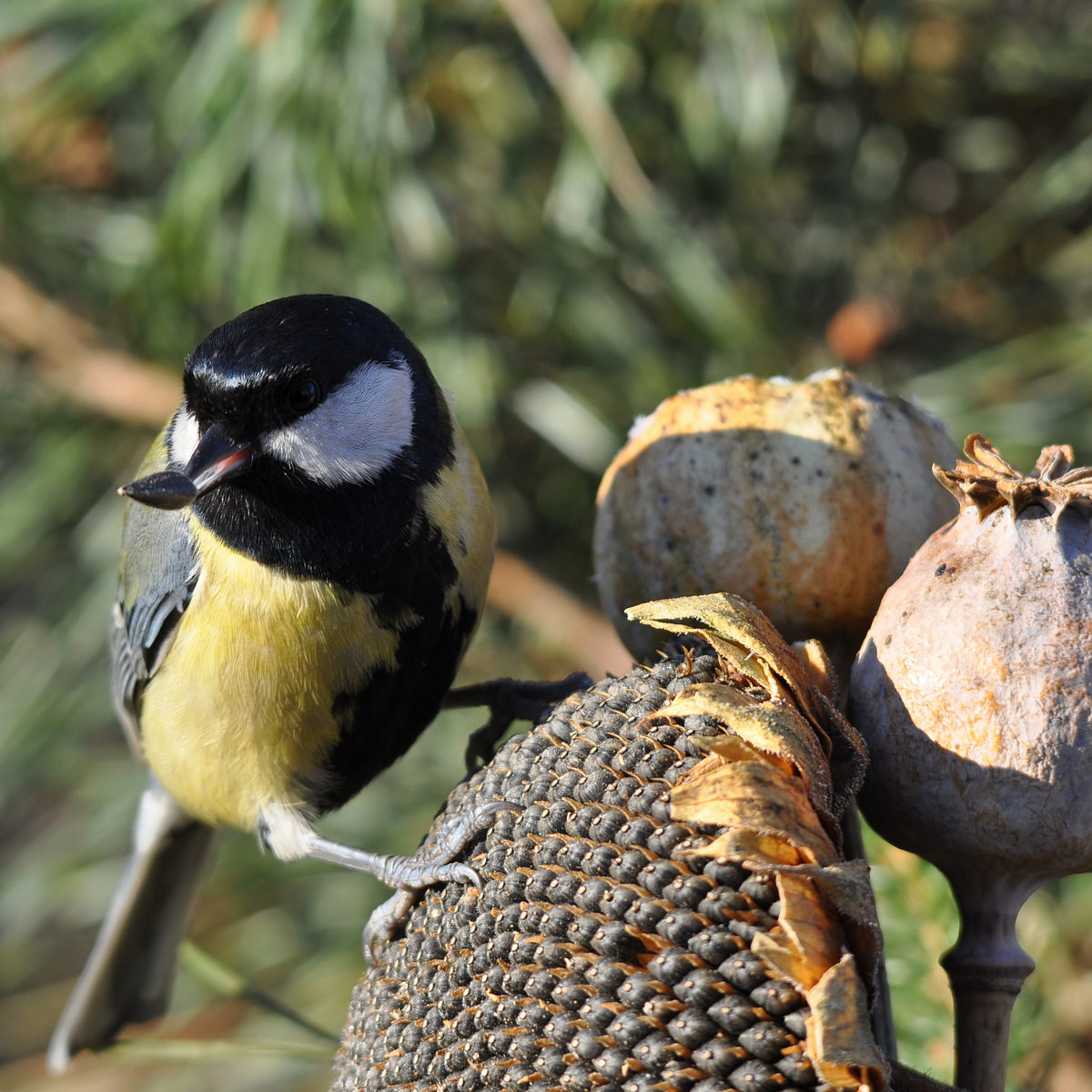
Once you’ve sown your sunflower seeds, you can cover the area with white garden netting (white is better as it lets more light in), a low tunnel or, in a pinch, a plastic bottle cut in half and placed above every individual seed as a dome. Once the seeds have germinated, you can remove the netting.
If you get uninvited deer guests to your garden, you should know that they might be attracted by the crunchy seed heads before they ripen and dry. In this case, you should plant your sunflowers in a fenced-in spot.
8. Stake your sunflowers early in the season.
The main attraction point of a tall sunflower – the majestic flower head – may also result in its downfall, quite literally.
When you’re planting a tall sunflower variety, you should take into account its expected maximum height and the expected size of the bloom. That’s because a lot of the tall varieties have been bred for height, but not necessarily for sturdiness.
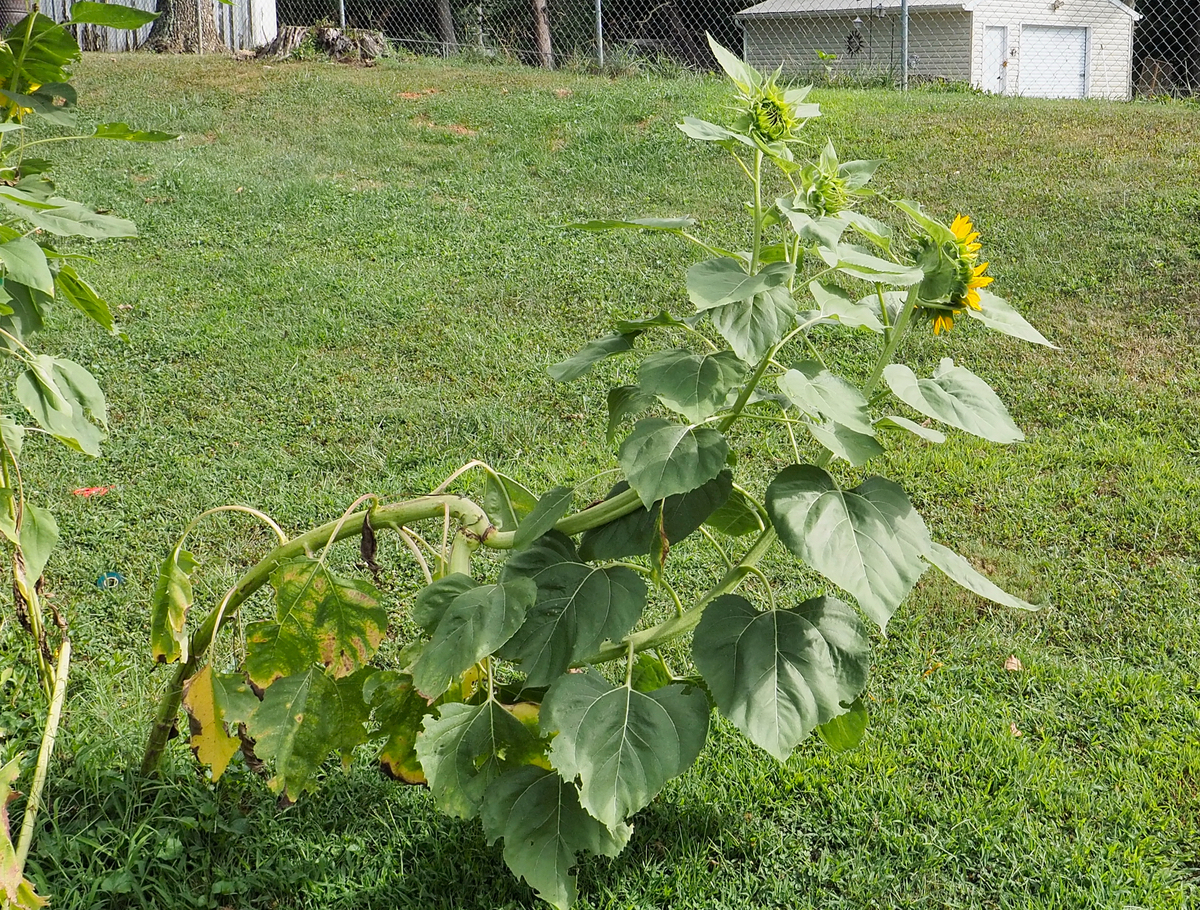
To avoid having to create too many support rigs for your sunflowers, consider planting them in a sheltered area right from the get-go. By that, I mean sheltered from strong winds and storms, but not too sheltered to get enough sun. You can plant your sunflowers along a fence (especially if you’d like to mask said fence) or next to your house since sunflowers make a wonderful privacy wall in the summer and fall.
In exposed gardens, you should create anchoring structures for your sunflowers early in the growing season. Even if your plant might not seem to need it, as soon as the flower head blooms and starts ripening, the weight of the seeds may cause the entire plant to become top-heavy and topple over in a storm. Place a sturdy bamboo pole next to each plant and secure it with a thick jute rope in a few spots along the stem of the sunflower. If necessary, a second bamboo stake can act as a counterbalance.
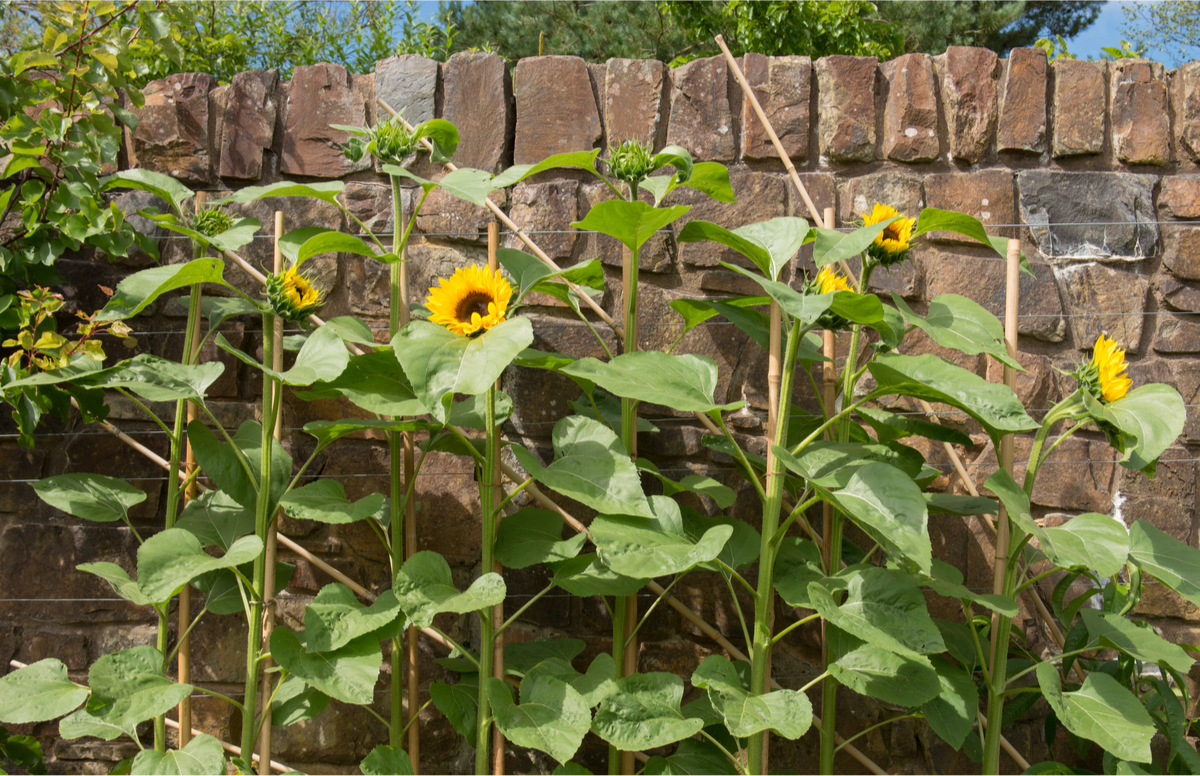
If you don’t have a protected location available for your sunflowers or if you’d rather not go through the hassle of building extra structures in your garden, then you can choose a thick-stemmed sunflower variety, such as ‘Titan’, ‘Giganteus’ and ‘Sunzilla’.
9. Save seeds from your largest sunflower.
Yep! You’ve made it to the end of the season and managed to grow giant sunflowers. Good job, but don’t rest on your laurels just yet! Now’s the best time to set yourself up for success for next year.
Pick your tallest, largest sunflower as your source of seeds for the following growing season. I don’t know about you, but seed saving is one of my favorite things about gardening. I can almost smell the anticipation and possibility in the air.
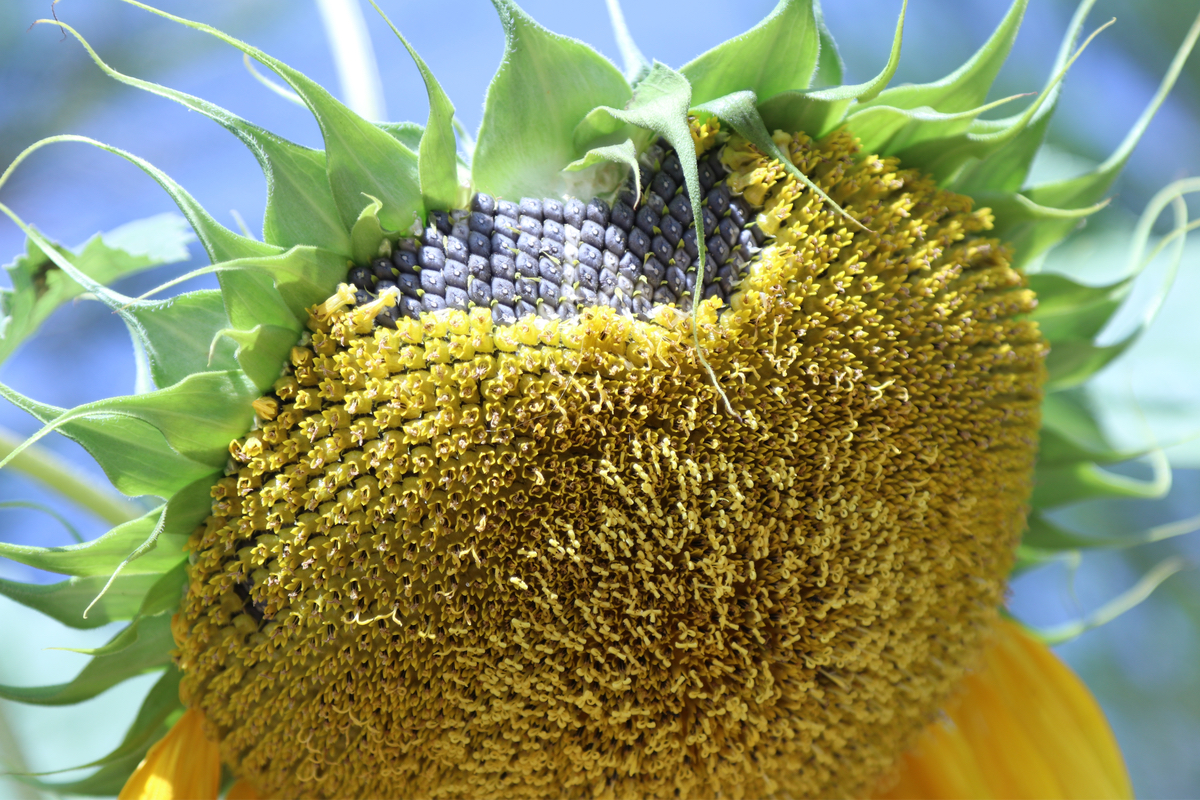
When are the sunflower seeds ready for harvest? You’ll know once the yellow petals and the florets that cover the head of the seed have dried and fallen off. The bracts (the leaf-like structures that grasp the back and the sides of the flower head) are beginning to dry and so are the leaves (starting with the bottom ones).
You can simply cut off the flower head and hang it upside down in a dry place to allow it to finish drying. Pick a couple of seeds every now and then to test. If the seed shells are hard, then your seeds are ready for harvesting. Tap the flower head gently for the seeds to fall off, or simply use your fingers to dislodge the seeds.
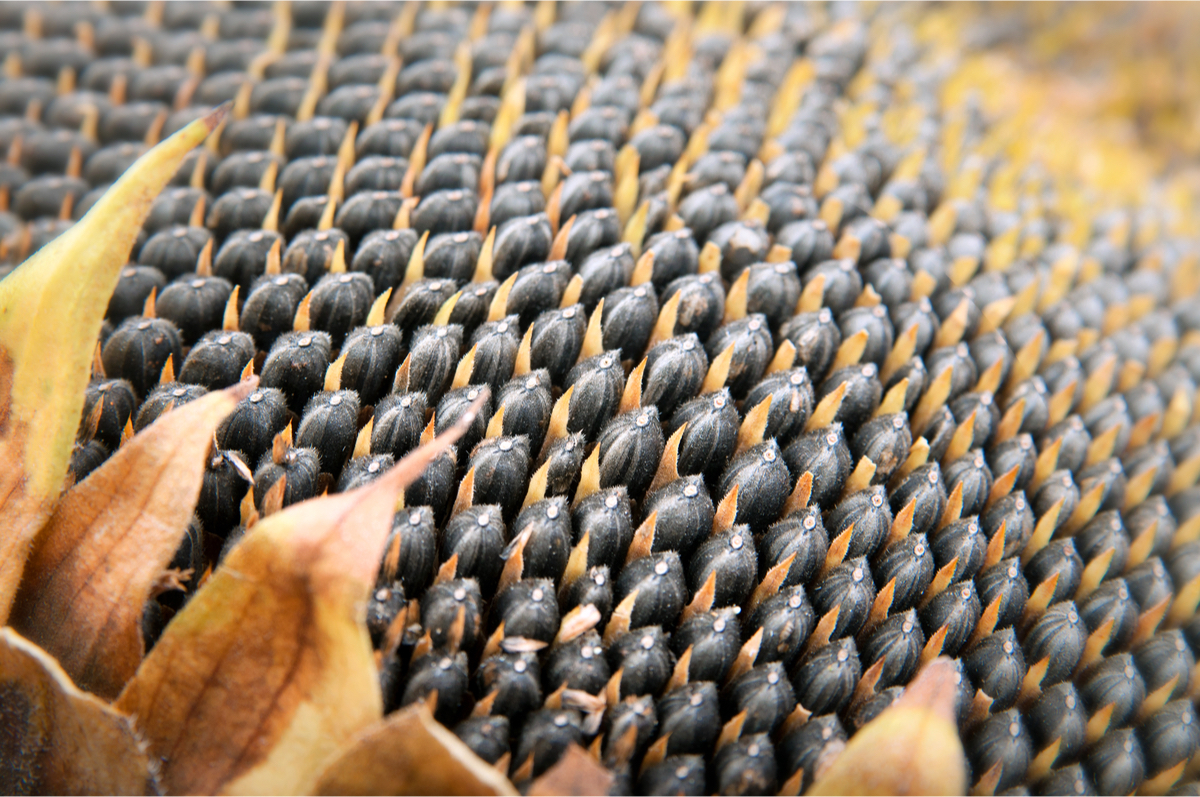
If you want your seeds to finish drying on the plant itself, remember that you’ll be competing with the birds for the best pickings. You can cover the seed head to make it harder for them to reach the seeds – a mesh bag, paper bag or muslin bag placed around the seed head should be enough to keep the birds away.
Just to avoid disappointment when you’re saving seeds, you should know that heirloom sunflowers are more likely to grow true to type than hybrids. This doesn’t mean that hybrids won’t grow at all, but you may not get a plant with the same characteristics as the mother-plant. Check your seed package to figure out what kind of seed stock you’re saving.
I hope this guide will help you get on the path to growing giant competition-worthy sunflowers. And if you ever make it in the Book of Guinness World Records, remember that you learned your tricks from Blooming Backyard. We promise to grant you full bragging rights.
